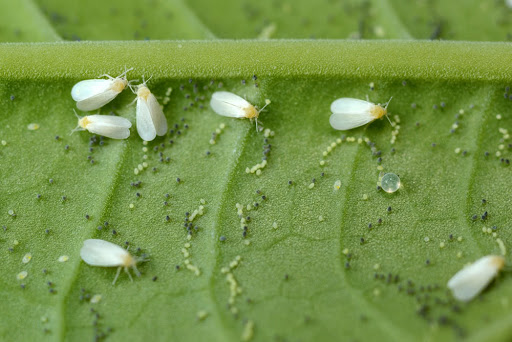A common problem faced by gardeners and growers all around the world can damage healthy plants in just a few weeks. Whitefly is one of the most persistent and troublesome pests in agriculture and home gardening. These minuscule bugs rack up billions of dollars in crop losses each year, damaging everything from greenhouse vegetables to outdoor ornamental plants.
20 to 40% loss of worldwide plant agriculture is caused by pests annually, of which whiteflies make a great contribution to this loss. Their rapid breeding and capacity to carry plant diseases make them problematic for farmers. The harm caused by them is not just limited to feeding; they can weaken plants and make them more vulnerable to other issues.
Knowing how to recognize and manage these pests is important for having healthy land plants. Try this method we have given below to prevent them, and make sure you get in touch with a professional pest control expert for help.
What are Whiteflies?
Whiteflies: The Soft-bodied, Winged, Plant Feeder Relatives of Aphids and Mealybugs. Despite their name, whiteflies are not closely related to flies, though they have wings and can fly. They are very small, less than 1/12th to 1/16th inch in length. Appearance: They are moth-like in appearance with a long and thin shape, and are usually grey-white in colour. Adult whiteflies have four wings, all of which are covered with a powdery white wax, providing the characteristic whitefly appearance. The nymphs and eggs control nymphs and eggs of the insects develop through several life stages, each of which introduces different complications for control.
What Do Whiteflies Feed On?
Whiteflies, or those tiny aphid-like flies among plants, are sap-sucking insects that extract the nutrients the plant needs by piercing plant tissue and sucking fluids that are essential to plant health. These pests attack a variety of plant types, including vegetables, fruits, and ornamentals, as well as weeds, and are thus considered to have a broad host range. Tomatoes, peppers, cucumbers, poinsettias, hibiscus, and numerous greenhouse crops are only a few examples of some of the most common targets.
Tips to Prevent Whiteflies
Early Detection and Monitoring
Inspect the undersides of leaves weekly for white bugs or their eggs. They are small, worm-shaped, and they are laid in a vertical position on the undersides of leaves. The eggs may be solitary or in a crescent spot. Place yellow sticky traps near plants with known past problems with whiteflies to monitor the number and catch adults. These traps also aid in detection and decrease the pool of egg-laying adults.
Cultural Control Methods
Keeping your plant spaced appropriately will promote good air flow, and this will help lower the moldy, humid climate that whiteflies love. Regularly remove weeds and plant debris where whiteflies may hide. Beware not to apply too much nitrogen fertiliser as it renders plants more attractive to such pests. When you are buying new plants, be sure to quarantine the new plants for at least 2 weeks to make sure you are not bringing in an infestation that is hidden before introducing them to your garden/greenhouse.
Physical and Biological Controls
Release predatory or parasitic insects such as ladybugs, lacewings, or parasitic wasps that prey on whitefly. Whiteflies can get confused with reflective mulch, and row covers provide physical barriers in the most vulnerable growth stages. Regular pruning of leaves with high infestation can alleviate the population pressure, leaving healthier parts of the plants.
Your Next Steps Against Whiteflies
Whitefly control requires prevention, early detection, as well as treatment to be successful. If not properly controlled, these persistent pests can quickly ruin plants and proliferate throughout growing areas. Regular observation and attention to your plants will allow you to identify issues before they become serious problems. Keep in mind that whitefly populations can adapt, making rotation of treatment types crucial for success in the long run.







